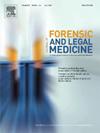Histopathology in medico-legal autopsies: Clinical foundation, legal mandate, and judicial guarantee
IF 1.2
4区 医学
Q3 MEDICINE, LEGAL
引用次数: 0
Abstract
Histopathological examination remains a cornerstone of the medico-legal autopsy. It provides essential insights into the vitality and chronology of injuries, as well as the functional mechanisms of death—elements that cannot be reliably assessed through gross examination or postmortem imaging alone. Despite this, a growing number of forensic institutions are progressively excluding histological analysis from standard protocols, particularly in cases of violent death. This shift is often justified by operational, financial, or doctrinal arguments, but represents a methodological regression with serious implications for diagnostic accuracy and legal certainty.
This article reviews the clinical, technical, and normative foundations of histopathology in forensic practice, with particular emphasis on its role in trauma-related deaths. It addresses the limitations of relying solely on macroscopy or imaging, and underscores the value of microscopy in identifying vital tissue reactions, timing of lesions, and subtle mechanisms such as asphyxia, inhibition, or embolic phenomena. The discussion includes examples from the literature and institutional practice, as well as a critique of the current trend toward minimal or absent histological sampling.
Finally, the authors propose a minimum protocol for histological sampling in cases of violent or suspicious death, integrating this with scene analysis and targeted dissection. Histopathology is presented not as an optional complement, but as an integral part of the medico-legal diagnosis—both as a scientific tool and as a safeguard of forensic accountability.
法医学尸检中的组织病理学:临床基础、法律授权与司法保障。
组织病理学检查仍然是法医尸检的基石。它提供了对损伤的活力和年表的基本见解,以及死亡的功能机制,这些因素不能仅通过大体检查或死后成像来可靠地评估。尽管如此,越来越多的法医机构逐渐将组织学分析排除在标准规程之外,特别是在暴力死亡案件中。这种转变通常是由操作、财务或理论上的争论来证明的,但它代表了一种方法上的倒退,对诊断的准确性和法律的确定性具有严重的影响。本文回顾了法医实践中组织病理学的临床、技术和规范基础,特别强调了其在创伤相关死亡中的作用。它解决了仅仅依靠宏观或成像的局限性,并强调了显微镜在识别重要组织反应、病变时间和微妙机制(如窒息、抑制或栓塞现象)方面的价值。讨论包括来自文献和机构实践的例子,以及对当前趋向于最小或缺乏组织学抽样的趋势的批评。最后,作者提出了在暴力或可疑死亡病例中进行组织学采样的最小方案,将其与现场分析和有针对性的解剖相结合。组织病理学不是作为一种可选的补充,而是作为医学法律诊断的一个组成部分,既是一种科学工具,也是法医责任的保障。
本文章由计算机程序翻译,如有差异,请以英文原文为准。
求助全文
约1分钟内获得全文
求助全文
来源期刊

Journal of forensic and legal medicine
MEDICINE, LEGAL-
CiteScore
2.70
自引率
6.70%
发文量
106
审稿时长
57 days
期刊介绍:
The Journal of Forensic and Legal Medicine publishes topical articles on aspects of forensic and legal medicine. Specifically the Journal supports research that explores the medical principles of care and forensic assessment of individuals, whether adult or child, in contact with the judicial system. It is a fully peer-review hybrid journal with a broad international perspective.
The Journal accepts submissions of original research, review articles, and pertinent case studies, editorials, and commentaries in relevant areas of Forensic and Legal Medicine, Context of Practice, and Education and Training.
The Journal adheres to strict publication ethical guidelines, and actively supports a culture of inclusive and representative publication.
 求助内容:
求助内容: 应助结果提醒方式:
应助结果提醒方式:


